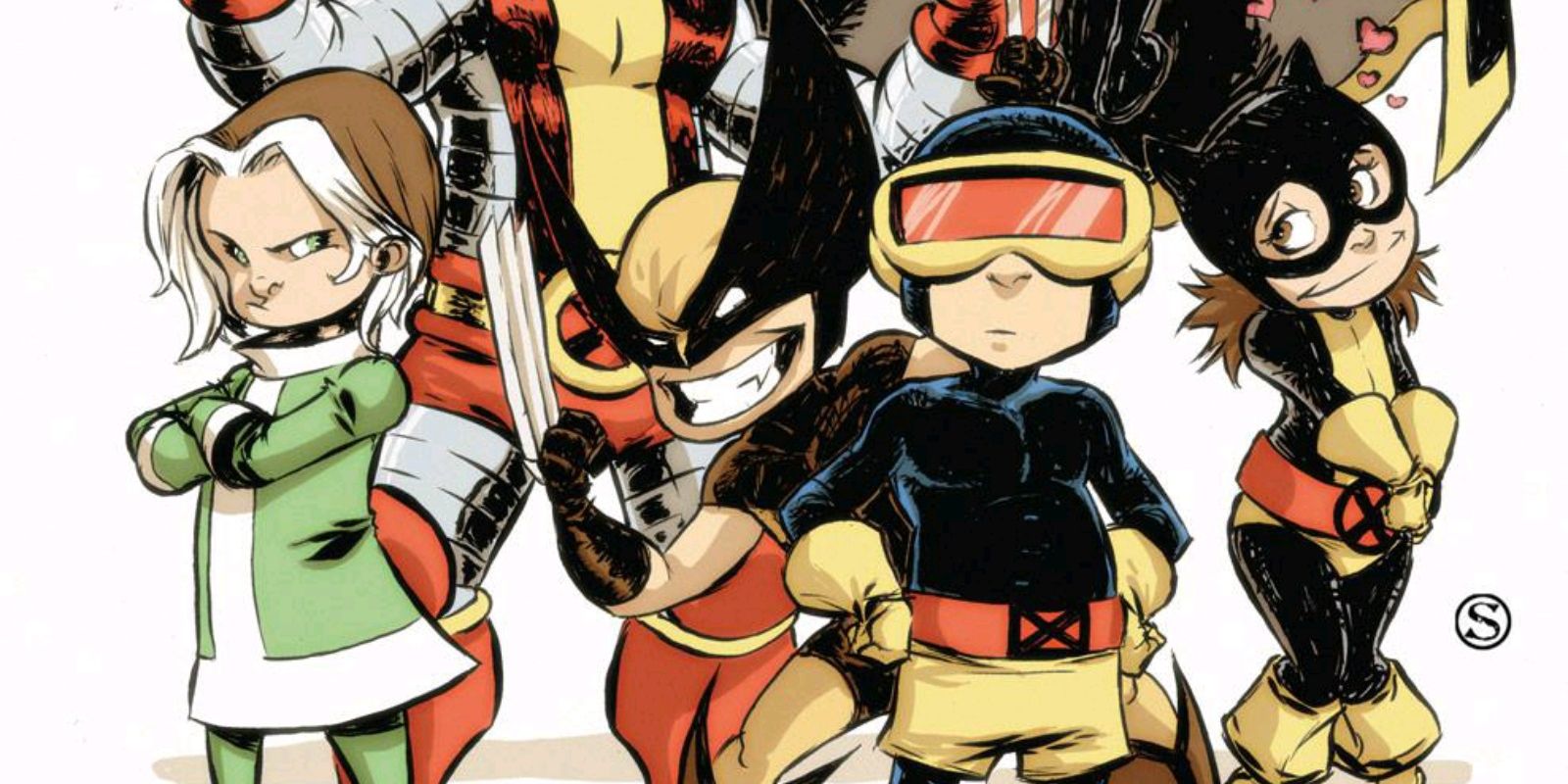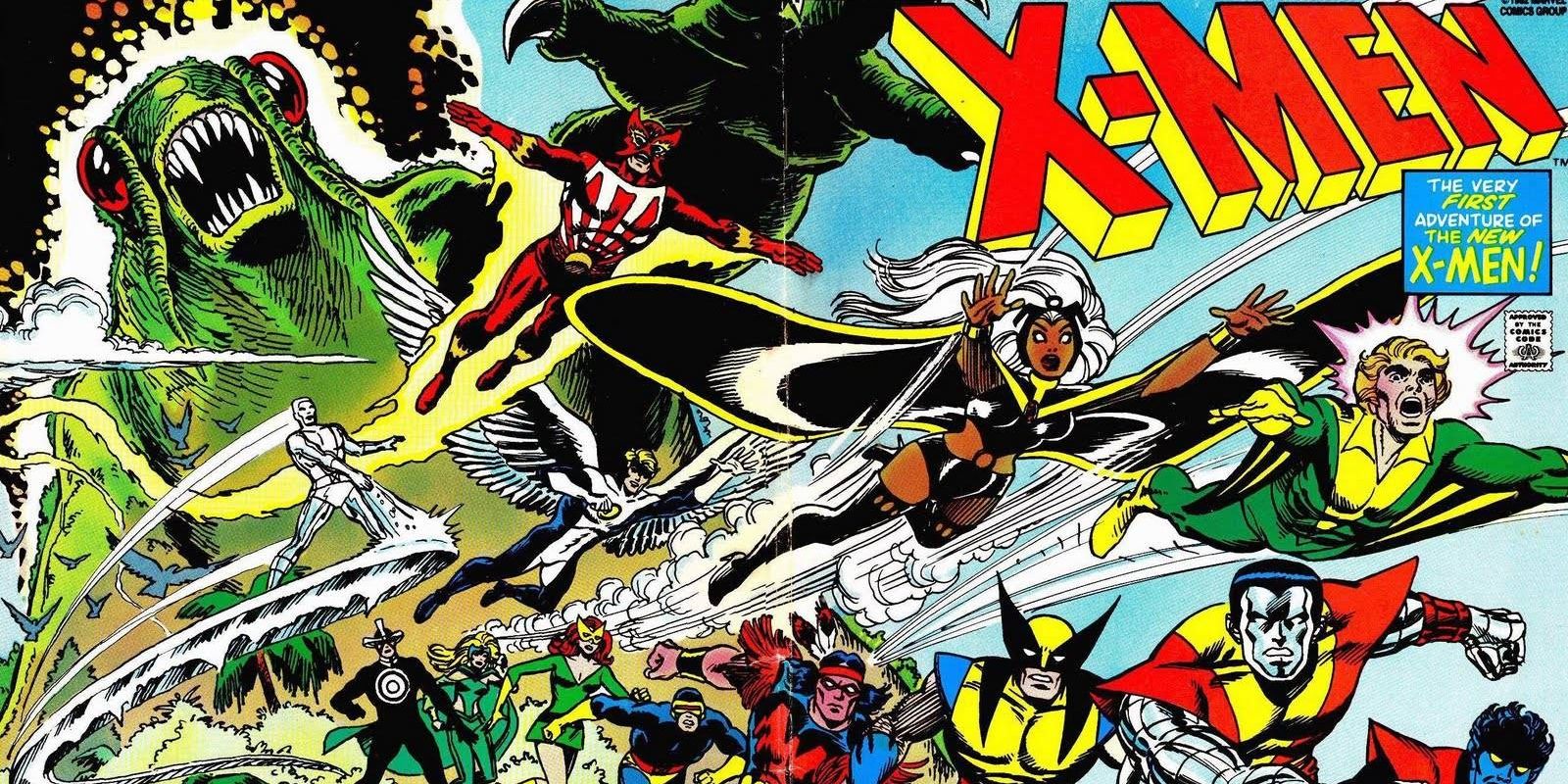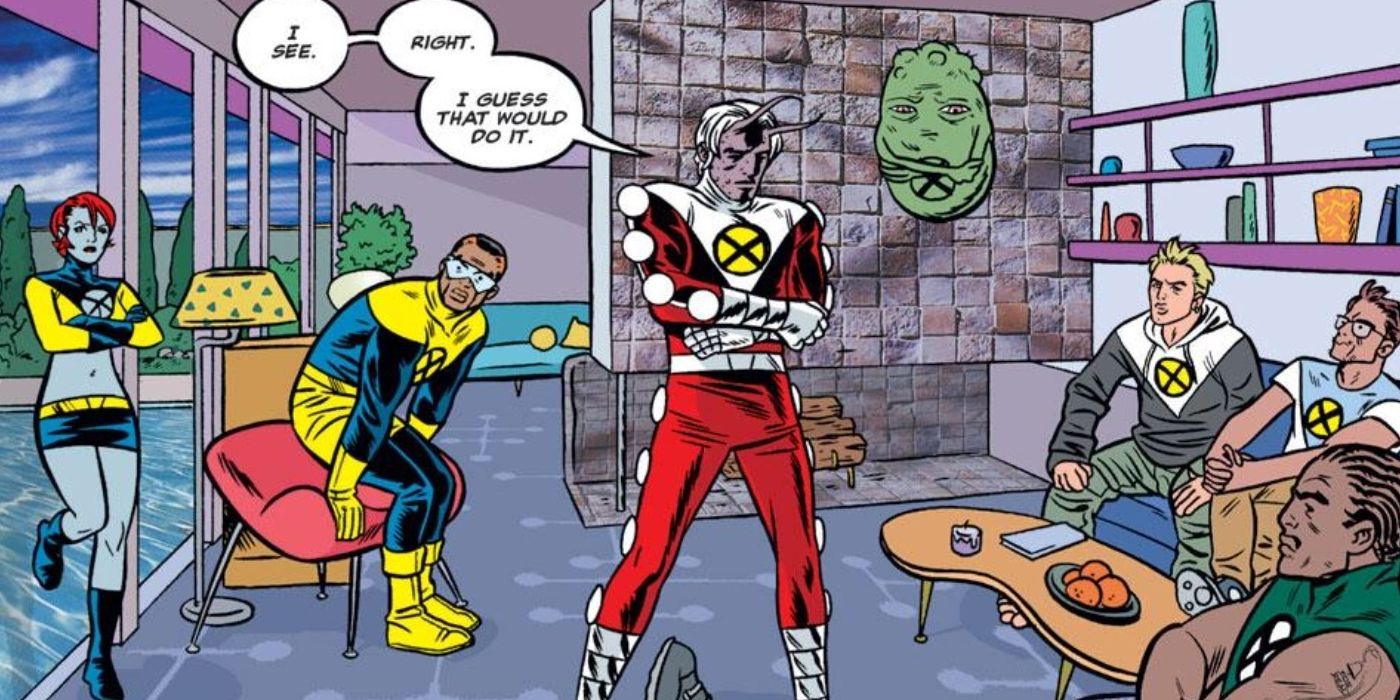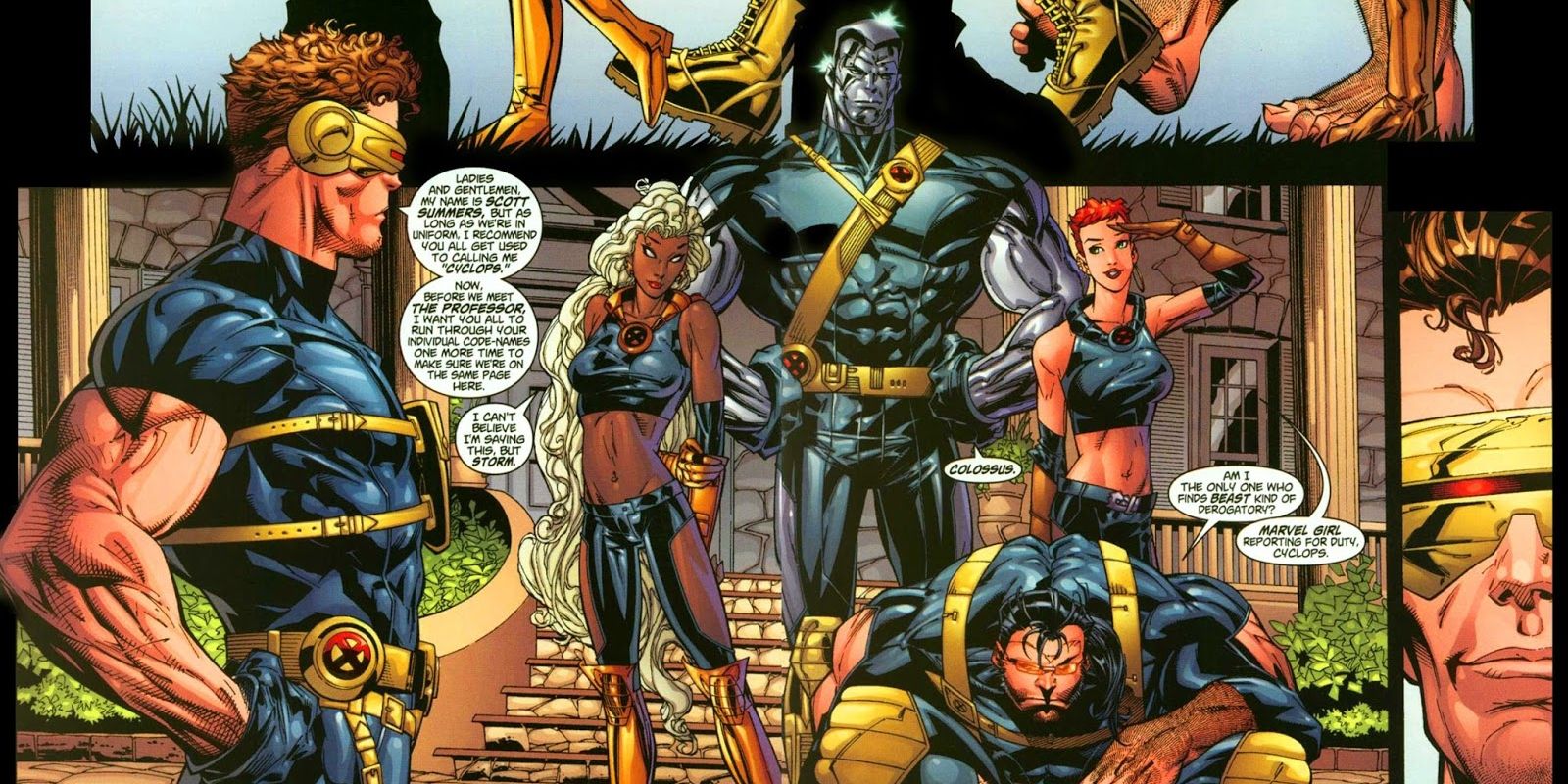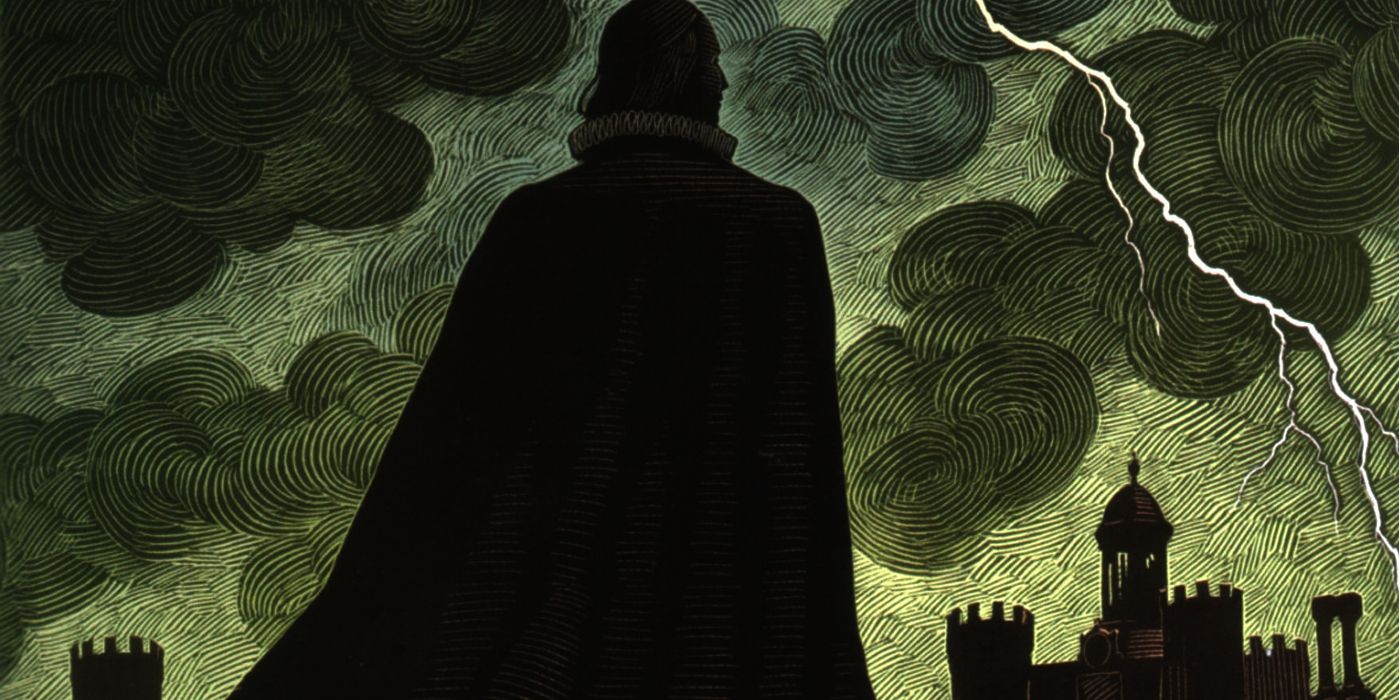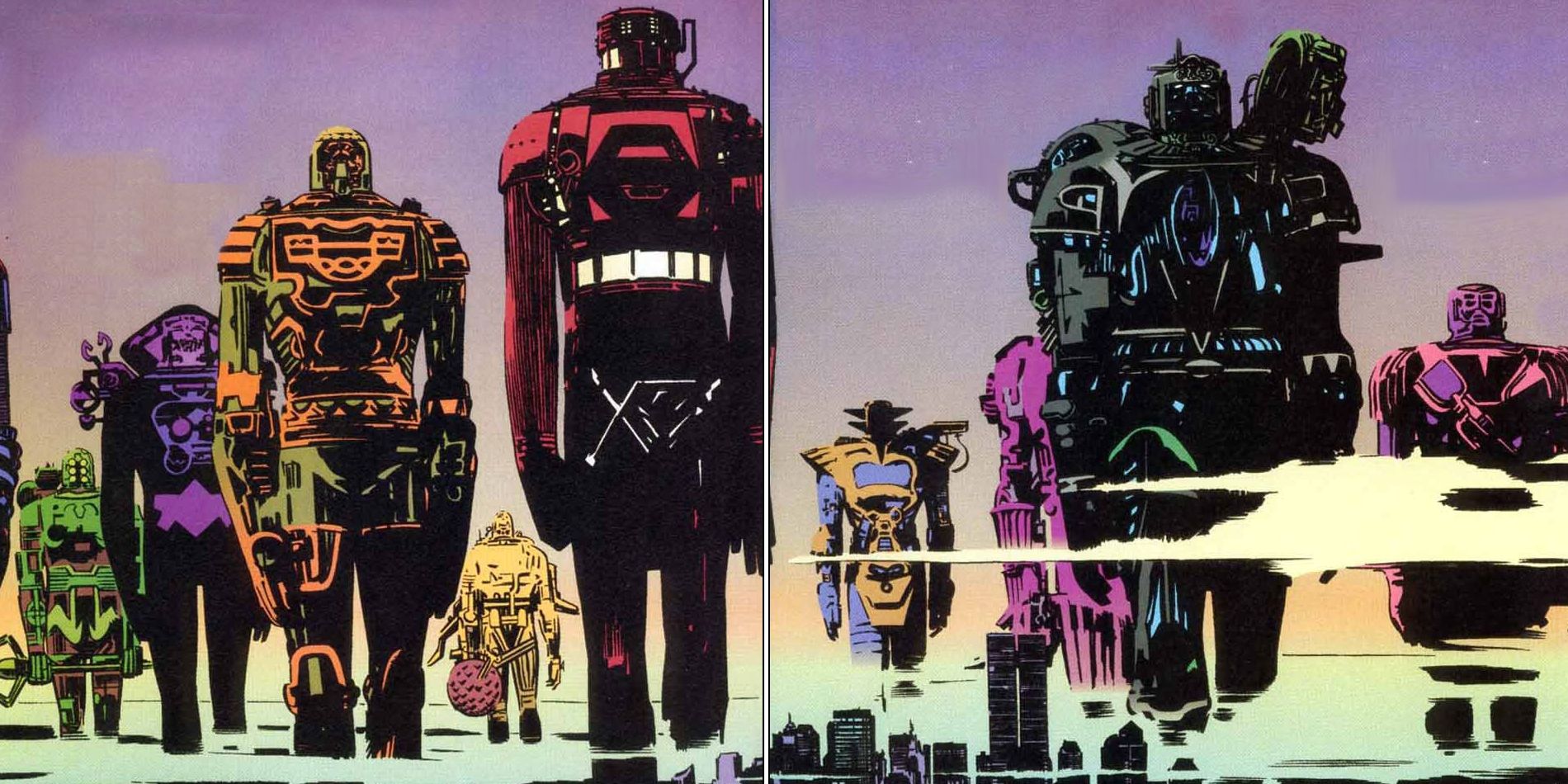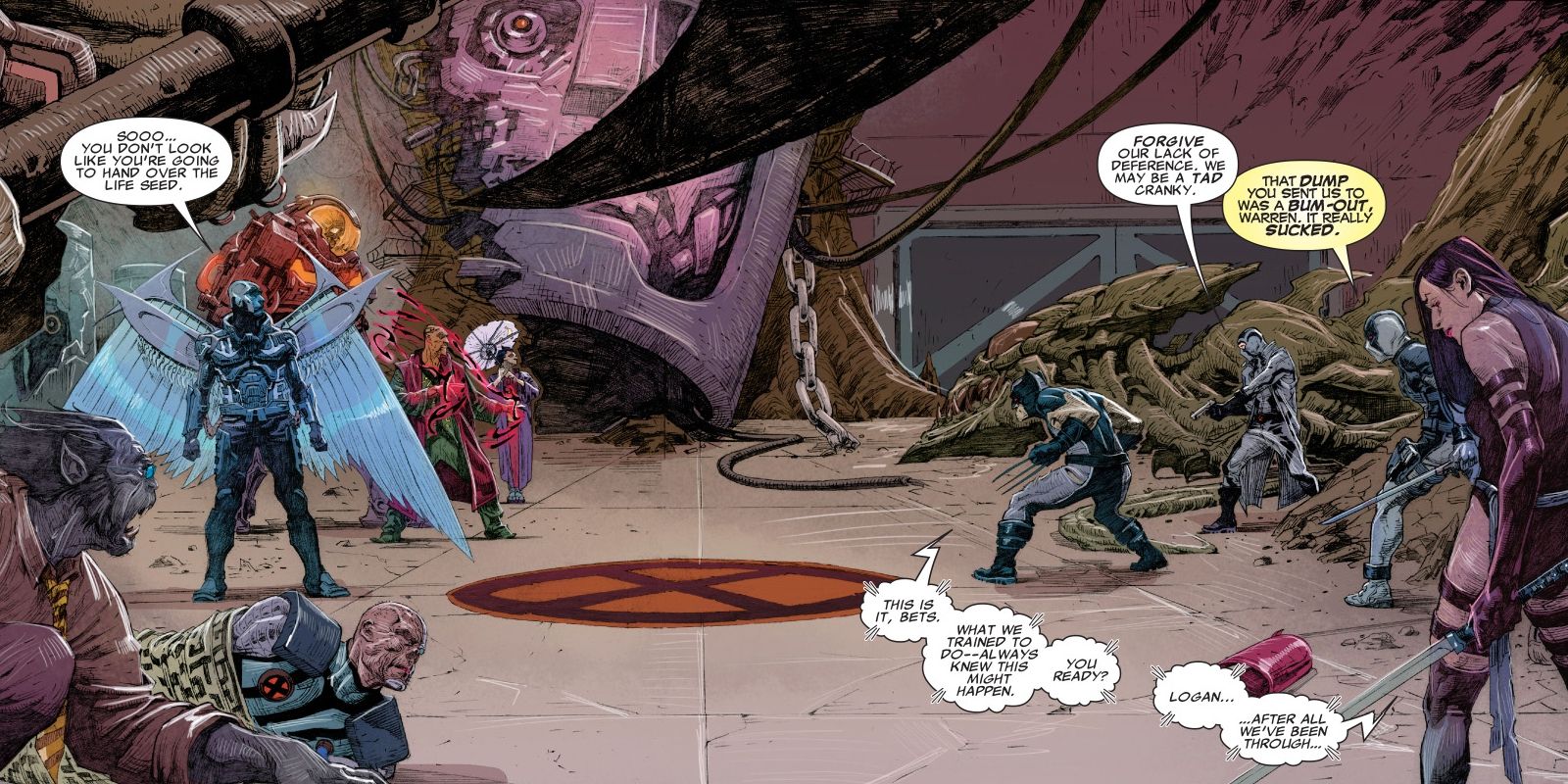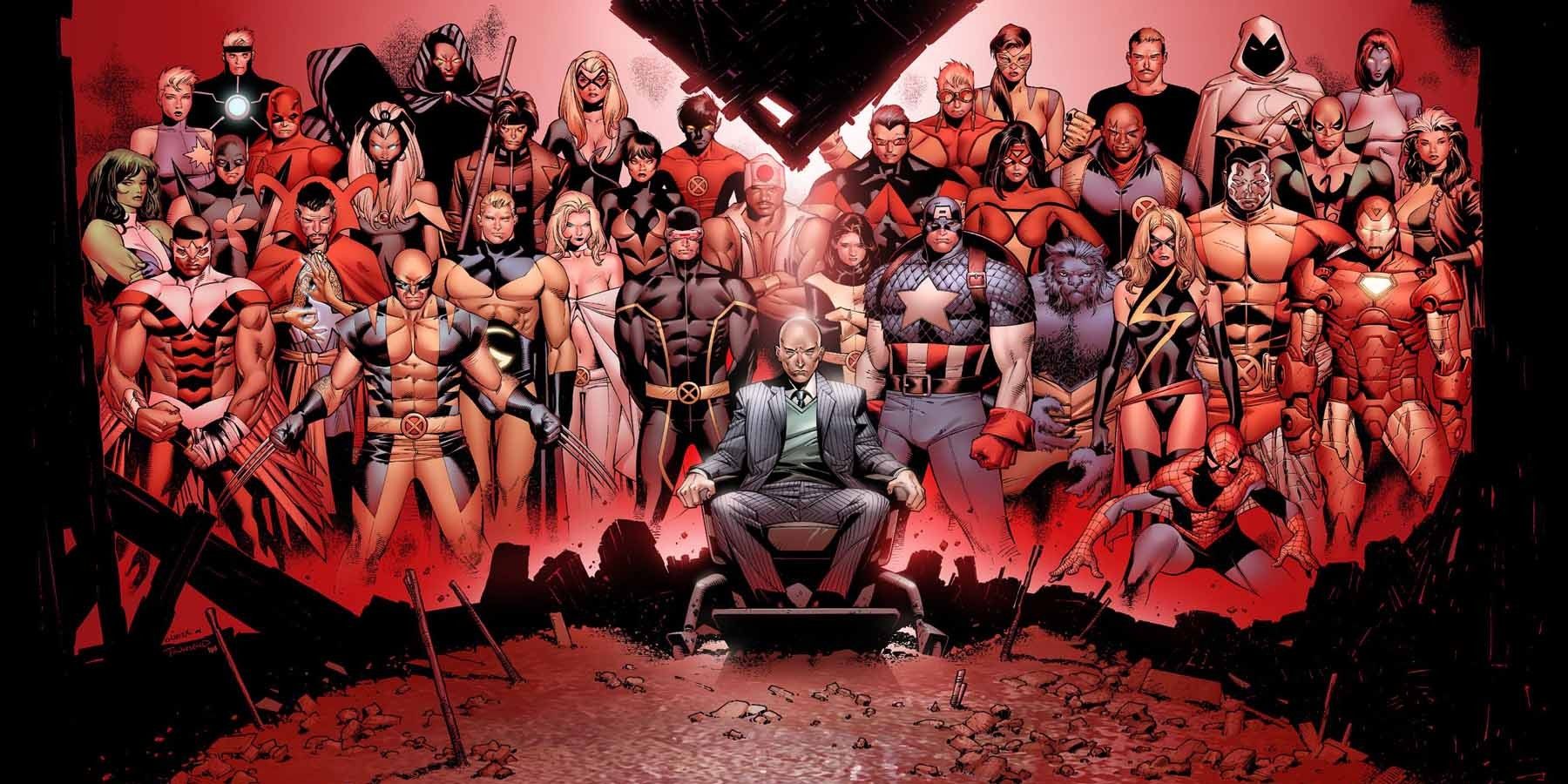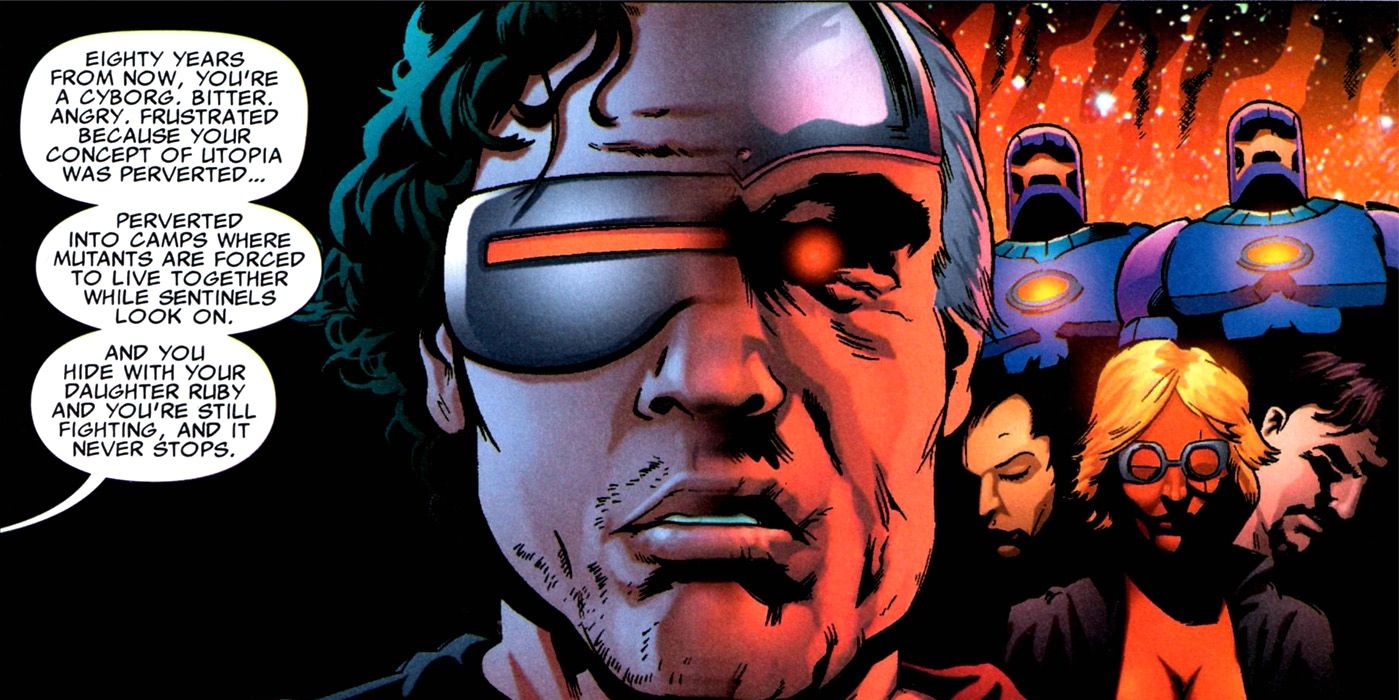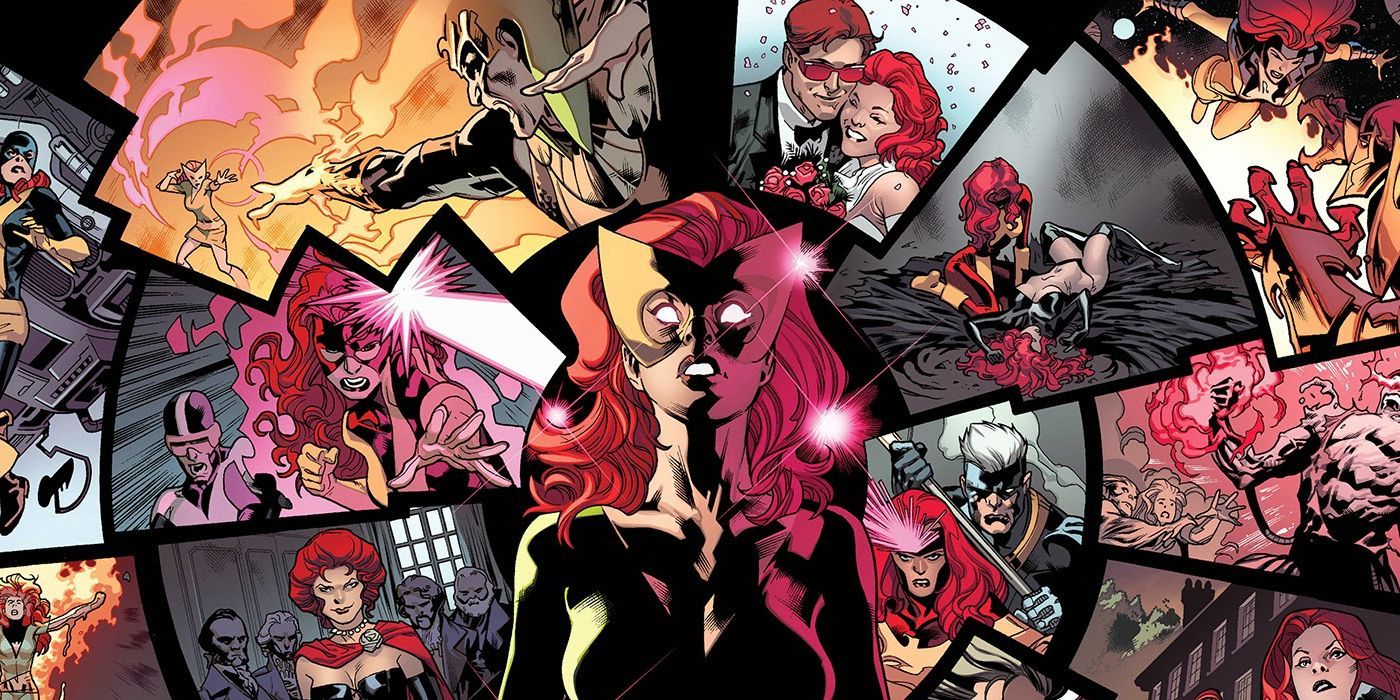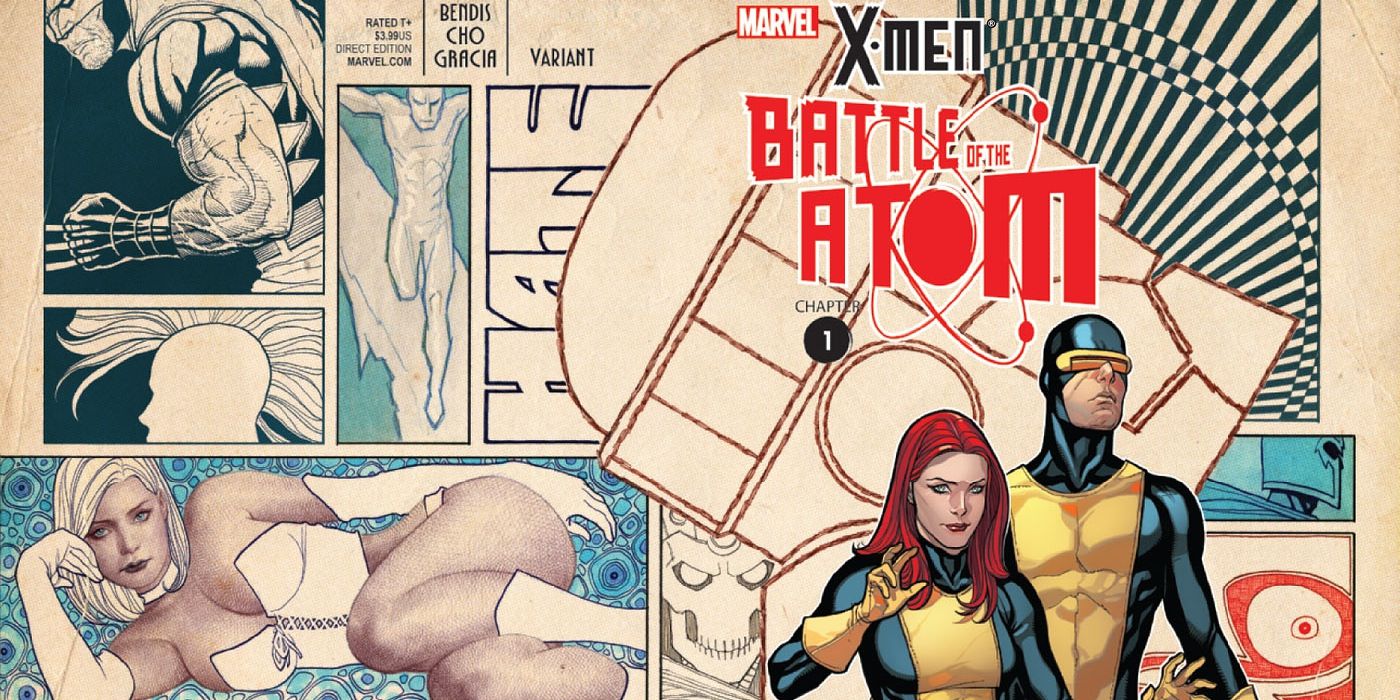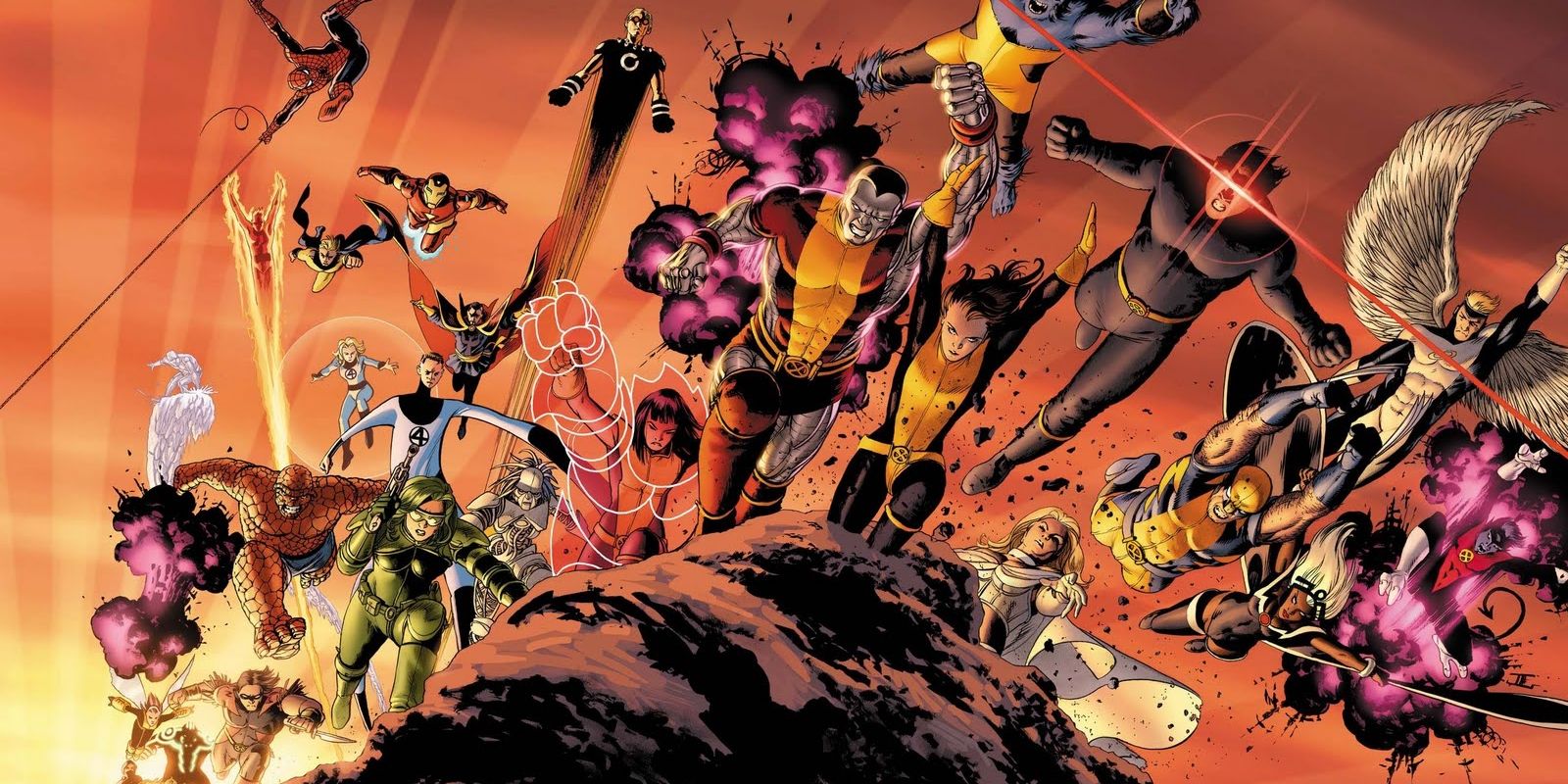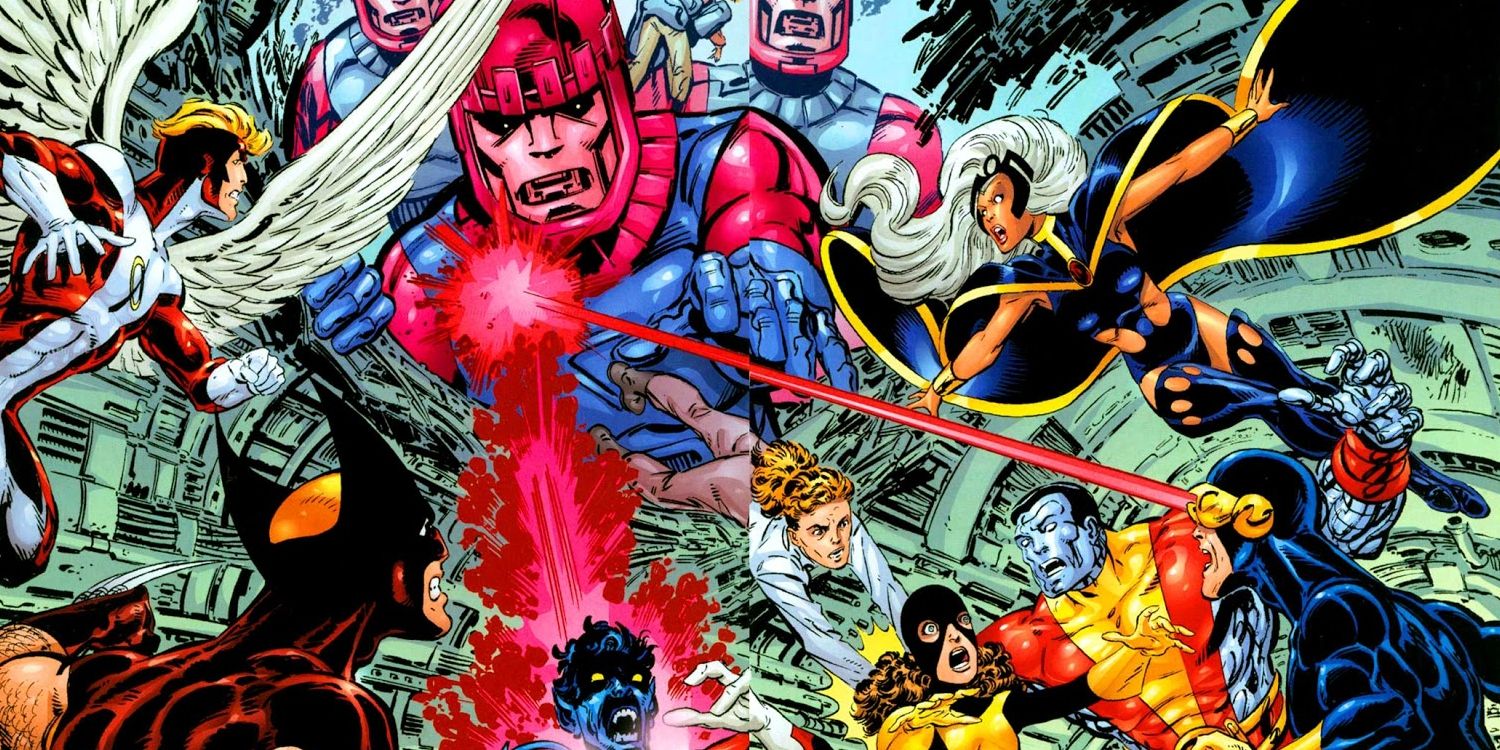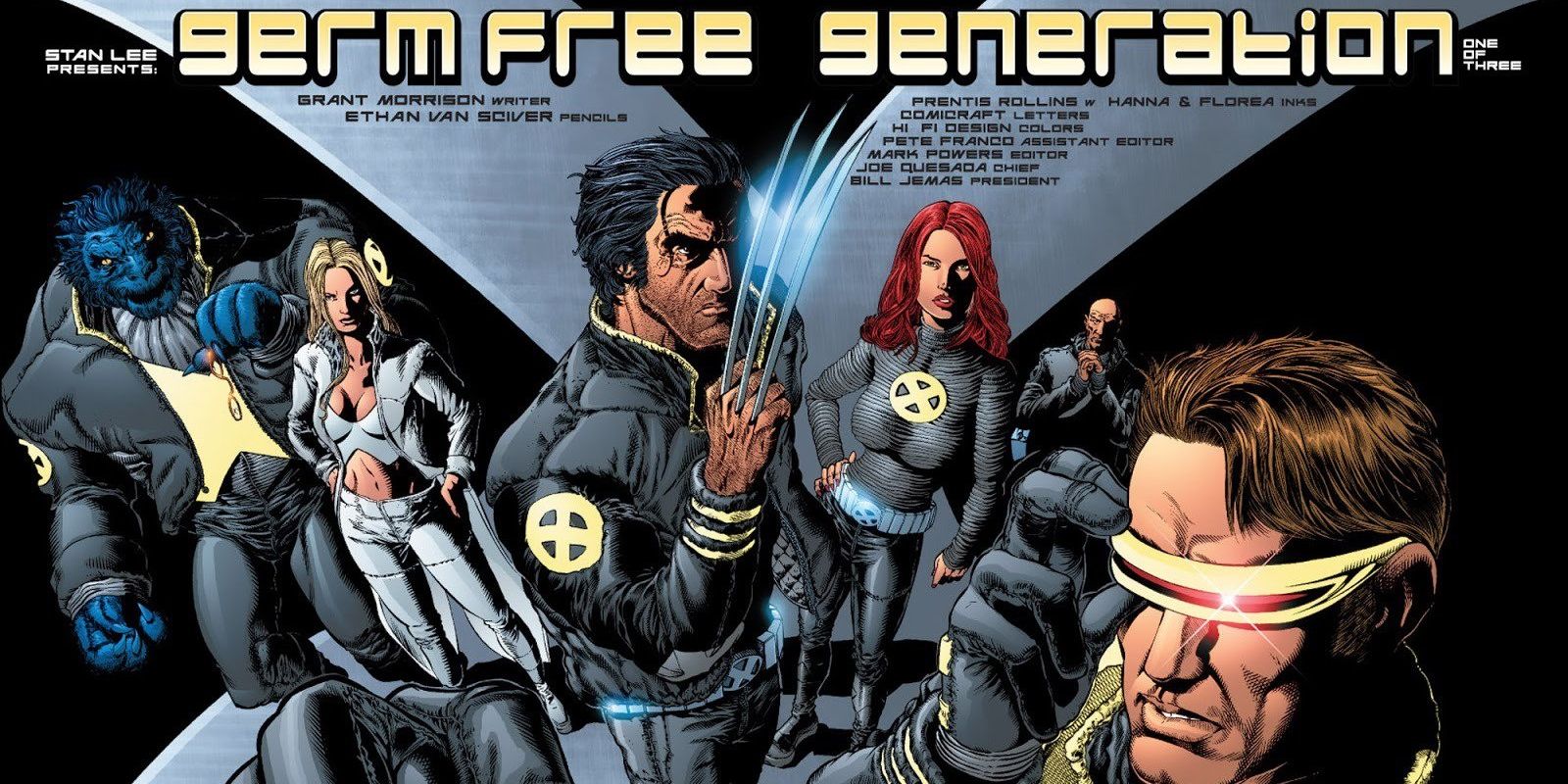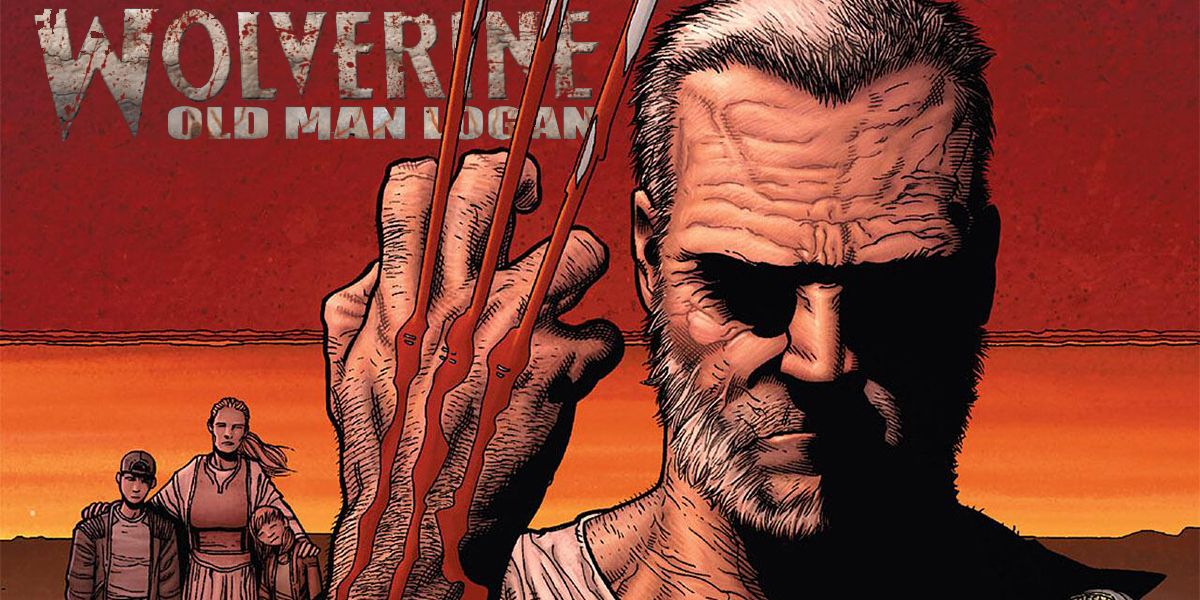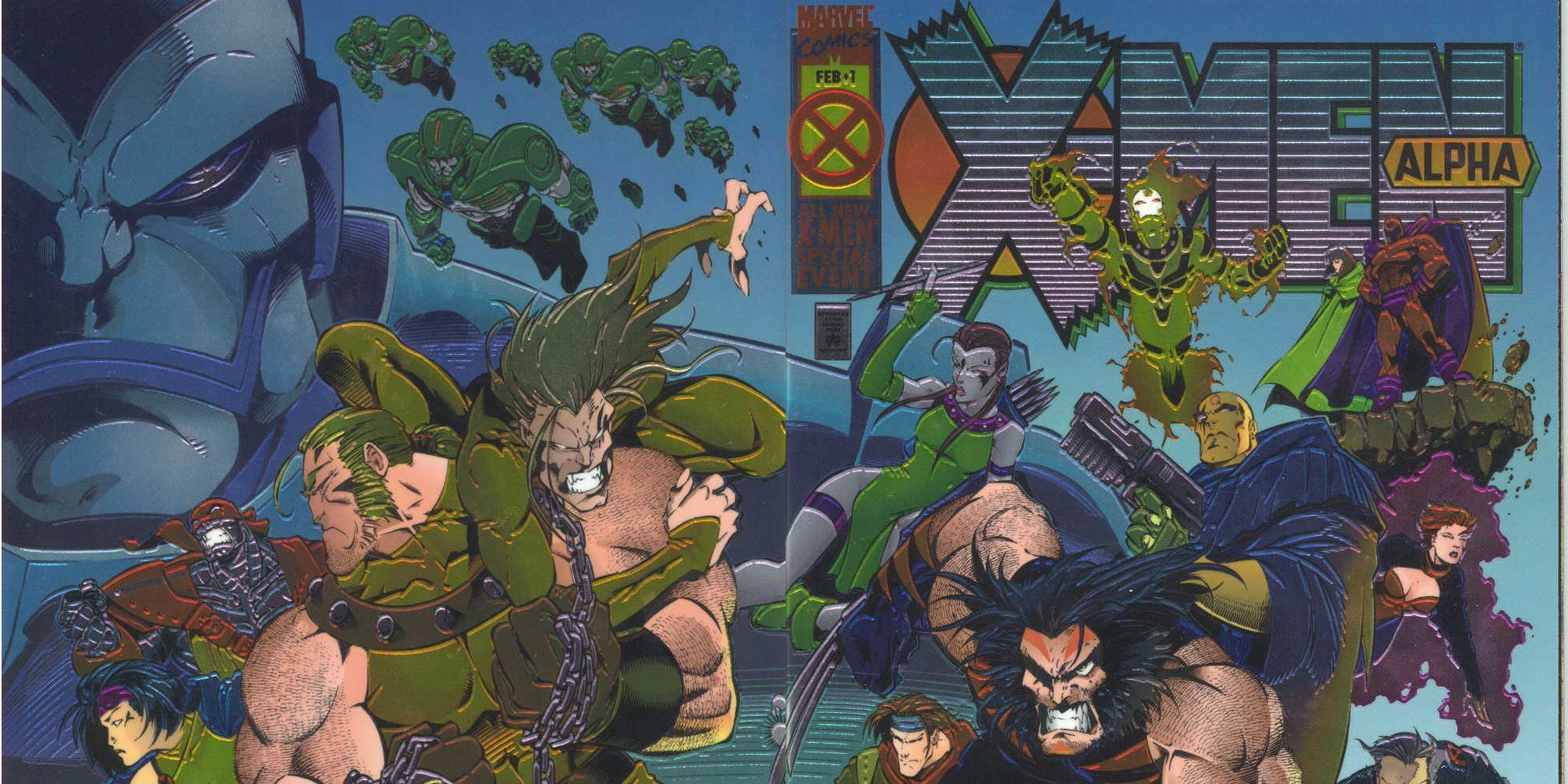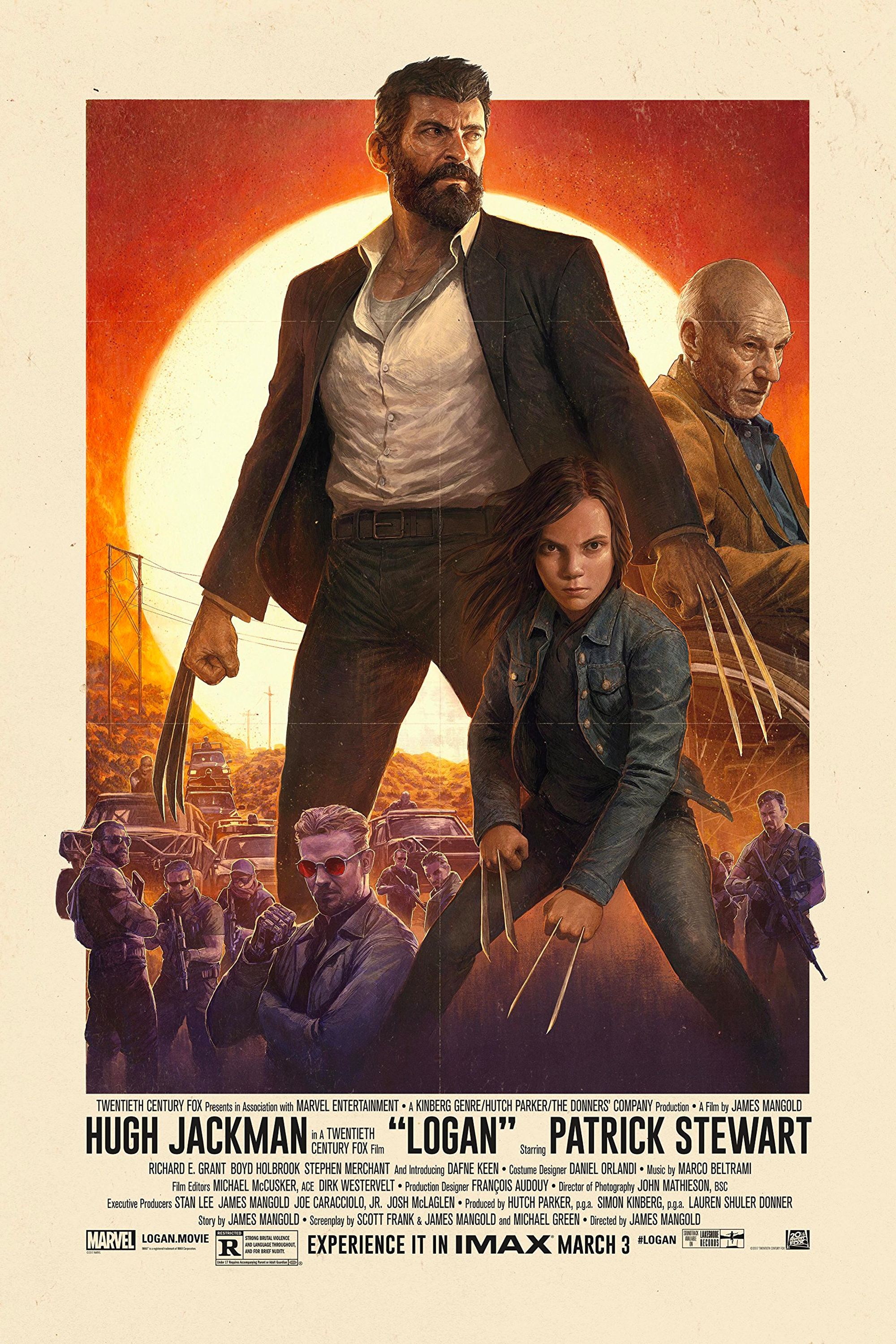The X-Men have been through countless iterations since their creation by Stan Lee and Jack Kirby over fifty years ago. Serving as an allegory about racism from their inception, the team pushed boundaries as Marvel’s most diverse group. Because mutant powers manifest around puberty, the book was able to explore adolescence in a way as yet unseen in comics. Cast out of society, these misfits formed an ersatz family. With epic storylines traversing generations, often taking us from past to future and back again, the X-Men have never lacked for good stories.
Much to the chagrin of certain X-Men fans, the comic’s continuity has been less than consistent over the years, due in large part to various diverging timelines and alternate realities. However, it is these time-traveling, dimension-spanning stories that yielded some of the finest moments in X-Men history. These tales often produced different futures, creating new versions of our favorite mutants. In certain cases, it wasn’t alterations in time, but rather the infusion of new creative forces that produced such visionary interpretations of these characters and forever changed the way that they were viewed.
The X-Men have over gone some pretty incredible changes over the years. Here are the 15 Best Versions Or Alternate Realities Of The X-Men.
15. X-Force/X-Statix
It was a ballsy move putting Peter Milligan and Mike Allred in charge of X-Force in 2001. Neither were big names at the time and while nothing groundbreaking was happening in the title, it was well-liked enough. Marvel wanted to shake things up and handing the reins to those two certainly did that. These new mutants were meant to be celebrity heroes, a concept that had never really hit the mainstream-- especially not in an X title.
X-Force had always taken itself very seriously, and while not everyone was happy with the new, more satirical direction, it cannot be argued that theirs was a completely unique approach. Milligan and Allred proved immediately that this would be a book unlike any other by killing off almost the entire team. Seriously, no one was safe in that book! Eventually retitled as X-Statix, this run has stood the test of time as one of the boldest and funniest reboots in comic history.
14. Ultimate X-Men
The Ultimate Universe was Marvel’s new imprint, launching several titles of revamped mainstays from the ‘60s (Spider-Man, X-Men, Fantastic Four, and the Avengers) and modernizing their origins. Although Ultimate X-Men would go off the rails in later years, its 2001 launch with Mark Millar at the helm put a new spin on the characters. Millar’s knowledge of the X-Men was fairly limited, based primarily on the 2000 film. His ignorance of the franchise enabled him to give the book a fresh take, unburdened by expectations of maintaining a similar feel to its mainstream counterparts.
Working primarily with artist Adam Kubert, Millar shaped the team for an entirely new generation, keeping enough similarities to engage those who were already fans of the X-Men as well. Ultimate X-Men was darker in terms of tone and subject matter. The team had no secret identities and Magneto was, in essence, a terrorist. Both of these choices made complete sense in terms of the change in times from the comic’s original publication. Millar has evidenced time and time again his ability to write a great story and between his snappy writing and Kubert’s eye-catching art, Ultimate X-Men wound up being a really smart update of beloved Marvel characters.
13. Marvel 1602
Following in the footsteps of his friend Alan Moore, Neil Gaiman wrote comics that transcended what people thought the form was capable of. With his masterpiece Sandman, Gaiman proved his talent for weaving fantastical stories within historical backgrounds. 1602 was another shining example of this. Written by Gaiman and drawn by Andy Kubert (brother to Ultimate X-Men artist Adam), the eight issue mini-series was released in 2003. In a post-9/11 world, Gaiman stated, "I didn't want it to be a war story, and I didn't want to write a story in which might made right – or in which might made anything.” So, the setting he chose to tell his tale was during the Elizabethan Era in both England and the New World.
Gaiman utilized many Marvel characters, but his versions of the X-Men were perhaps the most interesting. Mutants were considered “witchbreed” and the five original X-Men (with names befitting the time and place) seek refuge at Carlos Javier’s College for the Sons of Gentlefolk. Notably, Jean Grey is going by John Grey and attempting to blend in as a boy. Magneto, or Grand Inquisitor Enrique, is leading the Spanish Inquisition. 1602 may not have been the most mind-blowing comic ever written, but what it did do was reimagine the X-Men in an incredibly inventive way.
12. X-Babies
Making their first appearance in Uncanny X-Men Annual #12, the X-Babies were created by the legendary team of Chris Claremont and Art Adams. Conceived by the villain Mojo, the X-Babies were clones of the X-Men, made to boost ratings in the Gladiator-style fighting television programs that the citizens of the Mojoverse relied on for entertainment. It was an earlier attempt on Mojo’s part to control the X-Men by making them into children that most likely inspired the miniature makeovers.
The X-Babies were adorable, but still managed to capture the essence of each of their adult equivalents. Baby Wolverine may be super cute, but Mojo didn’t think so when the mutant known for skewering first and asking questions later took a claw to his butt. In a move that would’ve made the actual X-Men proud, the X-Babies rebelled against their monstrous creator. Mojo would’ve killed them, but they were such a ratings smash that he couldn’t help but keep them around. The lil’ mutants have appeared many times since, as recently as 2016’s Secret Wars spinoff Giant Size Little Marvel: AvX, in which they battle mini versions of the Avengers.
11. Earth X
Okay, so “best version” may be a stretch here, because the direction that Jim Krueger and Alex Ross chose to bring the X-Men in their 1999 dystopian take on the Marvel Universe was pretty bleak. It was also entirely engrossing. Drawn by Jean Paul Leon, the premise is based around a time in which superpowers are essentially no longer super. In a world where all humans have been granted incredible abilities, superheroes are just people like everyone else.
Of course, this is a dystopia, so everyone having powers doesn’t go very well. The backlash of a failed experiment by Reed Richards has pretty much decimated all telepaths. It appears Jean Grey is alive and in a miserable marriage with Wolverine, a sad drunk with a beer gut. It turns out this woman appearing to be Jean is actually Madeline Pryor. Colossus is the Czar of Russia and Kitty Pryde died taking a bullet for him. Ice Man can no longer shift from his ice form and Cyclops, AKA Mr. S, is heading up a new team of X-Men. It’s a fascinating take that falls apart in later installments Universe X and Paradise X, but Earth X on its own is a brilliant story that brought us new incarnations of all our favorite characters.
10. Uncanny X-Force
In 2010, Rick Remender assembled a fairly misanthropic group, comprised of Wolverine, Psylocke, Fantomex, Deadpool, and Archangel. He wrote this replacement for the third volume of X-Force, which features gorgeous art by Jerome Opena. This is a pretty hardcore team and the addition of Deadpool to the mix brings in a much-needed dose of humor. That, combined with the overall dark tone of a comic that’s not afraid to ask difficult questions of complex characters makes for a really exciting and fun ride.
Remender is a truly adept storyteller and Opena’s atmospheric art is the perfect companion for his writing style. Aside from that, the characters are extremely well written. Wolverine takes on a leadership role of a team he is ideally suited for and Fantomex’s development is handled perfectly. The relationship between Betsy and Warren feels both real and necessary. Every story in Remender’s run, from the “Apocalypse Solution” to the “Dark Angel Saga”, is a worthy addition to the pantheon of significant X-Men stories.
9. House of M
Giant crossover events for both Marvel and DC have a tendency to be overblown and disappointing. Oftentimes, they go out with a whimper and have little, if any lasting impact on the comic landscape. This was not the case with House of M, which affected the mutant population more than any story since Age of Apocalypse. Written by Brian Michael Bendis and drawn by Oliver Coipel, the limited series was released in 2005.
It centered on a mentally unstable Scarlet Witch, whose reality-warping powers had become a serious concern. Bendis had already upgraded her abilities from formidable to inconceivable during his Avengers run and her fragile mental state had been well established when she lost it and killed several fellow Avengers. Amidst the heroes' disagreements over how to handle her, Wanda did what anyone with her power set would do: she remade the entire world. Mutants became the ruling class and everything changed. Only Wolverine retained memories of the world as it was. One of the coolest things about this series is seeing all the X-Men granted their “heart’s desire” (except for poor Charles Xavier) and then seeing them unmade by the end as Wanda utters the three words that would send ripples across the Marvel Universe: “No more mutants.”
8. X-Factor Volume Three
Peter David, who had written a beloved run on X-Factor in the ‘90s, reinvented the series in the wake of House of M. Volume Three of X-Factor had a noir feel, which set it apart from any other X book at the time. Jamie Madrox opened X-Factor Investigations and recruited a now depowered Rictor, as well as Wolfsbane, Strong Guy, Monet, and Siryn. David explored the depths of the Multiple Man, making him into leading man material. Madrox’s duplicates all had distinct personalities and whatever happened to them greatly affected him.
In fact, David’s stories were very character driven, which was a large part of what made them so good. He made every member of that ragtag group indispensable. He also excelled in storytelling, from the mundane to the incredible. It could be as simple as a case the gang was solving (which was rarely what it seemed) or something as epic as the Summers Rebellion, which was one of the coolest X-Men alternate timelines ever put on paper. Aside from that, although Layla Miller played an important role in House of M, it was Peter David who really made her matter in a larger context by adding her to the team.
7. All New X-Men/Uncanny X-Men Volume Three
It had been a while since anything particularly cool had gone on in any of the X titles when Bendis decided to take over two of them in 2012. Following the events of Avengers vs. X-Men, Cyclops had basically become a religious zealot and the team was severed. Bendis made the controversial decision to have Beast (in a desperate attempt to stop Cyclops) bring the five original X-Men from the past to the present. This was a clever way of bringing fan favorite Jean Grey back from the dead (again), as well as exploring the way that the decisions we make in our youth affect us as adults. After all those years of becoming somewhat jaded with the X-Men, it was refreshing to get reacquainted with teenage Angel, Jean, Beast, Cyclops and Iceman, and there were plenty of exciting developments. Jean wound up with the ability to absorb psionic energy and Iceman realized that he was gay.
While telling that story in All New X-Men, with the amazing Stuart Immonen on art duties, Bendis was simultaneously unfolding another. In the aftermath of AvX, Cyclops, Magik, Emma Frost and Magneto are mere shadows of their former selves. Uncanny X-Men follows Cyclops’s team as they locate and bring new mutants into the fold, which created a compelling dynamic between the two teams and how their methods differ. The explosive art of Chris Bachalo made Uncanny X-Men all the more difficult to put down.
6. Battle of the Atom
When Bendis brought the five original X-Men into our timeline, he opened the door to this killer crossover event. Merging narratives from Jason Aaron’s Wolverine and the X-Men, Brian Wood’s X-Men and All New X-Men, this story focused on the consequences of keeping the mutants from the past here in the present. Further complicating matters is a team from the future that includes Wiccan, Colossus, and the Ice Wizard (turns out Iceman got super awesome later in life), as well a Future Brotherhood with Molly Hayes (if you haven’t read Runaways, you’re blowing it) and the new Xorn, AKA Jean Grey. We also get to meet Raze, the child of Wolverine and Mystique. Those guys want the young X-Men returned to their timeline pronto. Everyone else kind of does too--except for Jean. While not without its flaws, the event was well-written, flowed nicely from title to title, and managed to incorporate more awesome new characters than you could count.
5. Astonishing X-Men
Joss Whedon had proven with Buffy the Vampire Slayer and Firefly that he was a master storyteller; capable of writing clever, funny dialogue, and that he was an expert in terms of character development. With his limited series Fray (2001), the tale of a future slayer, he let everyone know that he could bring those same characteristics to his work in comics. In 2004, he teamed up with John Cassaday, who at the time was best known for his work on Planetary, whose gorgeous artwork truly complimented Whedon’s writing.
Astonishing X-Men had to be great if it was to set itself apart from Grant Morrison’s masterful run on New X-Men. Whedon’s book followed most of the same characters, but he added plenty of new ones as well, such as Kavita Rao and Ord. He has a special talent for writing female characters, as evidenced by every project he’s ever worked on, and this book was no exception. The relationships between our major players never felt contrived and every story arc Whedon wrote built on the one before, building to the crescendo that was Giant Size Astonishing X-Men #1. Let’s also not forget that he made the Danger Room sentient and brought Colossus back from the dead.
4. "Days of Future Past"
It is impossible to talk about essential versions of the X-Men without mentioning Chris Claremont. It was really his tenure on the book that gave us the X-Men as we know them. He was behind every classic story from the “Dark Phoenix Saga” to “Fall of the Mutants”. His is, and always will be, the definitive run on Uncanny X-Men. Despite being merely a two-issue story (#141 & #142), “Days of Future Past” left an indelible mark on Marvel’s mutants.
A stirring meditation on hatred and the cost of every choice we make in life, it’s shocking that such an epic story was able to fit in such a small package. Claremont’s dialogue may be a bit difficult to wade through for the modern reader, but his chops as a storyteller are undeniable. Anyone that’s seen the 2014 film knows the gist of the tale-- the largest difference here being that Kitty is actually the one whose consciousness takes a trip through time. This remains one of the most emotionally resonant X-Men tales ever told.
3. New X-Men
X-titles were desperately in need of a lifeline when Grant Morrison took over the New X-Men (retitled from X-Men) in 2001. Frank Quitely’s stunning artwork graced the pages during the entire first arc and then sporadically after, although several great artists worked on the title. Gone were the gaudy spandex costumes and the school became important once again. Morrison created some excellent characters, including Fantomex, and brought us one of the greatest twists in the history of comics.
The reveal that Xorn was actually Magneto was something that no one saw coming. Not even the fact that it was later sadly undone by Chuck Austin’s unfortunate run on Uncanny X-Men can ruin that story. The relationships that Morrison created, both new and old, always felt organic and he brought a sexuality to the title that it had never seen before. No run since Claremont’s has impacted the future of the X-Men so completely and while some writers have come close no one has accomplished it since. Morrison basically was to the X-Men what Bendis was to Daredevil many years after Frank Miller’s seminal run.
2. "Old Man Logan"
Written by Mark Millar and drawn by the incomparable Steve McNiven (the same creative forces behind Civil War), “Old Man Logan” gave us a Wolverine we’ve never seen before, a Logan who’s given up the fight. The bad guys won a long time ago and he’s accepted that. Married with a couple of kids, Logan's living the quiet life and hasn’t even popped his claws since the heroes lost the war. He takes a job on the road with a very old, very blind (and very cool) Hawkeye to get the money he needs to pay off the Hulk’s jerk grandkids, who happen to be his landlords.
Written in the monthly Wolverine comic, “Old Man Logan” depicts truly horrific scenes with breathtakingly beautiful artwork. He decapitates the Red Skull with Captain America’s shield and somehow it looks gorgeous. As the story unfolds, we learn that, tragically, it was Logan who was tricked into killing his fellow X-Men by one of Mysterio’s illusions. That was the day not only that the X-Men died, but that the Wolverine died as well. Upon his return with Hawkeye, Logan finds his family murdered, which unleashes the berserker once more. “Old Man Logan” is heartbreaking, violent, and a truly original take on the Marvel Universe. We'll see Fox's interpretation of this tale with Logan next year.
1. Age of Apocalypse
The most fondly remembered X-Men event from the ‘90s would have to be the sprawling epic that was Age of Apocalypse. The X-Men may not all have been the best versions of themselves (some of them were kind of jerks), but it was probably the greatest crossover in X-Men history. It was not only creative, but also well constructed. Despite the many writers and artists involved, a cohesive narrative was maintained throughout the entire story, which has been a failing of many crossovers before and since.
With Xavier murdered before ever forming the X-Men, Magneto stepped up and became the hero we all new that he could be. Apocalypse ruled the world, which worked out pretty much how you’d think. Characters and relationships were reformed, with heroes becoming villains and vice versa. By this point, readers had developed more than enough investment in the X-Men to be truly horrified by certain developments, but the story was so good that it hardly mattered. This cataclysmic event rocked the X-Men and has become the standard by which all other crossovers are judged.
---
Which alternate versions of X-Men are your favorites? Let us know in the comments!

